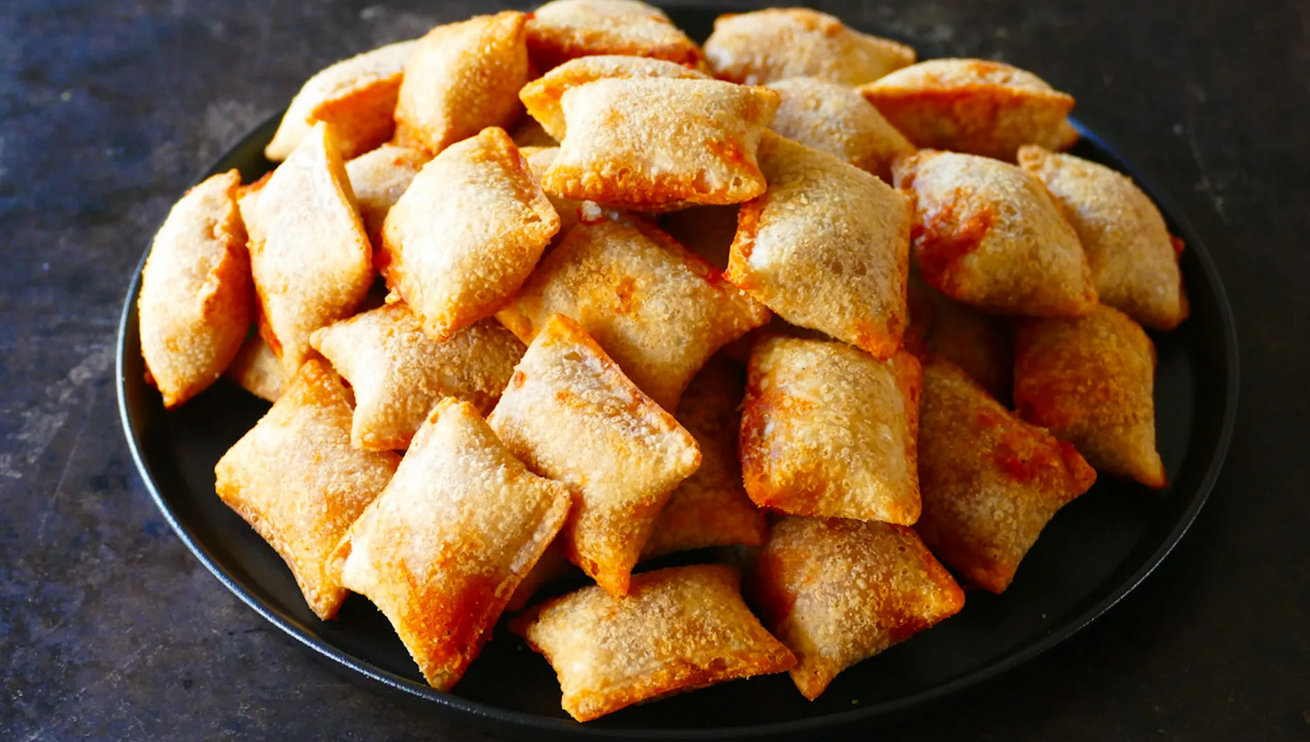In the ever-evolving world of gastronomy, few creations have captured the hearts of snack enthusiasts as profoundly as Pizza Rolls. A marvel of bite-sized convenience, these tiny treasures ingeniously encapsulate the timeless allure of a classic pizza into a compact, finger-friendly treat. At first glance, they might seem like humble morsels. Still, each roll tells a tale of a culinary journey where rich tomato sauce meets melted cheese, often punctuated by spicy pepperoni, succulent sausage, or an array of other fillings.

However, Pizza Rolls can spoil, and sometimes people can get food poisoning.
Can You Get Food Poisoning From Pizza Rolls?
You can get food poisoning from Pizza Rolls that have been improperly stored or past their expiration date, which can lead to bacterial or mold growth. Eating contaminated Pizza Rolls can result in food poisoning, manifesting in symptoms such as nausea, vomiting, and diarrhea.
It is rare to get food poisoning from Pizza Rolls. Theoretically, this is possible, but based on news research, there is no single big news story about Pizza Roll poisoning. The reason is that usually only expired Pizza rolls can cause symptoms such as nausea, vomiting, and diarrhea.
Like many other frozen food products, Pizza Rolls are not immune to spoilage. While freezing can dramatically slow down the growth of harmful bacteria and pathogens, it doesn’t stop it completely, especially once the product has been thawed. Here’s a breakdown of the components and what can happen over time, especially with expired Pizza Rolls:
- The Filling: Fillings typically consist of tomato sauce, cheese, and possibly meats like pepperoni or sausage. These components can harbor bacteria if the product is not stored correctly or past its expiration date.
- The Outer Crust: The crust, made of dough, can also spoil. Mold might develop, especially if there’s any moisture. Additionally, the crust can become rancid if the fats within the dough begin to break down.
- Freezer Burn: Over time, Pizza Rolls stored in a freezer for an extended period without being properly sealed can get freezer burn. While this doesn’t necessarily make the food unsafe to eat, it can adversely affect the texture and flavor.
- Odor and Flavor Changes: As weeks turn into months past the expiration date, the fats within the Pizza Rolls can turn rancid, leading to off smells and tastes.
- Microbial Growth: With extended expiration, especially if the Pizza Rolls have been subjected to temperature fluctuations (like being thawed and refrozen), there’s a risk of bacterial and mold growth. Consuming spoiled food can lead to foodborne illnesses, which might result in symptoms like nausea, vomiting, diarrhea, and more.
Please read our article How Long Does Food Poisoning Last?
While Pizza Rolls are convenient and tasty, adhering to storage guidelines and consuming them before expiration is essential. If Pizza Rolls are many weeks past their expiration, or if there are any signs of spoilage (like an off smell, mold, or change in texture), it’s best to discard them to avoid any potential health risks.
The Filling of Pizza Rolls and the Risk of Food Poisoning
Despite their frozen state when purchased, Pizza Rolls contain ingredients in their filling that can become a haven for harmful bacteria if mishandled or consumed after their prime.
- Tomato Sauce: Tomatoes are naturally acidic, which usually prevents the growth of many bacteria. However, when combined with other ingredients, exposed to air, or stored improperly, the sauce can lose its protective acidic quality, allowing bacteria to thrive.
- Cheese: Dairy products, such as the cheese used in the filling, are susceptible to bacterial contamination. Cheese can easily harbor bacteria like Listeria, especially if it remains at a temperature conducive to bacterial growth for extended periods.
- Meats: Including meats, whether it’s pepperoni, sausage, or any other type, adds another layer of risk. Meats are a prime breeding ground for bacteria, including E. coli and Salmonella, especially if not cooked or reheated to the right temperature. In a compact product like a Pizza Roll, the meat must be cooked properly before packaging, and it’s equally important that consumers cook the product to the recommended temperature before eating.
Furthermore, the risk of bacterial growth in the filling is magnified if the Pizza Rolls are not stored correctly. For instance, if the product is left out at room temperature for several hours or is thawed and then refrozen multiple times, the likelihood of bacterial growth increases. This is particularly concerning with products with a long shelf life, as consumers might not notice subtle changes in taste or smell, indicating spoilage.
- How Many Tablespoons is One Clove of Garlic? - June 26, 2024
- How to Measure 3/4 Cup When You Don’t Have the Right Measuring Cup? - June 6, 2024
- How Much Does Cooked Pasta Weight Compare To Dry? - April 30, 2024
